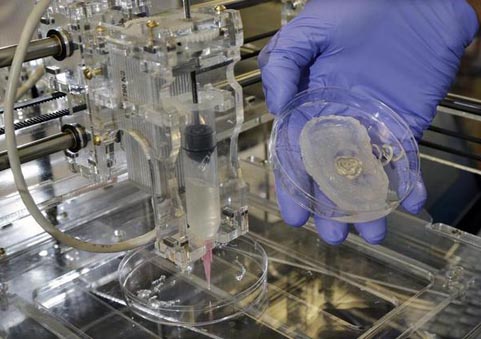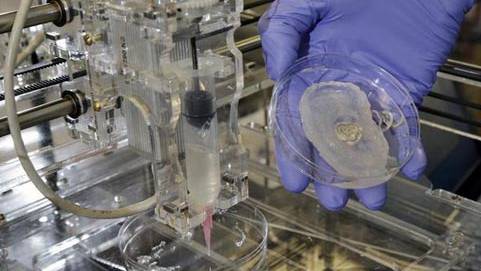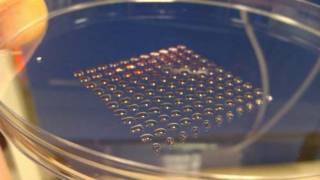Researchers make ’bionic ear’ with 3-D printer
Source: newsdaily.com
With a 3-D printer, a petri dish and some cells from a cow, U.S. researchers are growing synthetic ears that can receive — and transmit — sound.
The Princeton University scientists send bovine cells mixed in a liquid gel through the printer, followed by tiny particles of silver. The printer is programmed to shape the material into a "bionic ear" and forms the silver particles into a coiled antenna. Like any antenna, this one can pick up radio signals that the ear will interpret as sound.
The 3-D ear is not designed to replace a human one. The research is meant to explore a new method of combining electronics with biological material.
"What we really did here was actually more of a proof of concept of the capabilities of 3-D printing," said Michael McAlpine, the professor who led the project. "Because most people use 3-D printing to print passive objects — things like figurines and jewelry."
After it’s printed, the 3-D ear is soft and translucent. It is cultivated for 10 weeks, letting the cells multiply, creating a flesh color and forming hardened tissue around the antenna.
McAlpine and his team demonstrated the antenna’s ability to pick up radio signals by attaching electrodes onto the backs of the ears in the printing process. When they broadcast a recording of Beethoven’s "Fur Elise" to a pair of fully cultivated ears, the electrodes passed the signal along wires to a set of speakers, and the music flowed out clear and without interference.
Although the new research is just one iteration in the field of cybernetics — an area that looks at combining biology with technology — McAlpine said the research could lead to synthetic replacements for actual human functions, and to a sort of electronic sixth sense.
[...]
Read the full article at: newsdaily.com






















